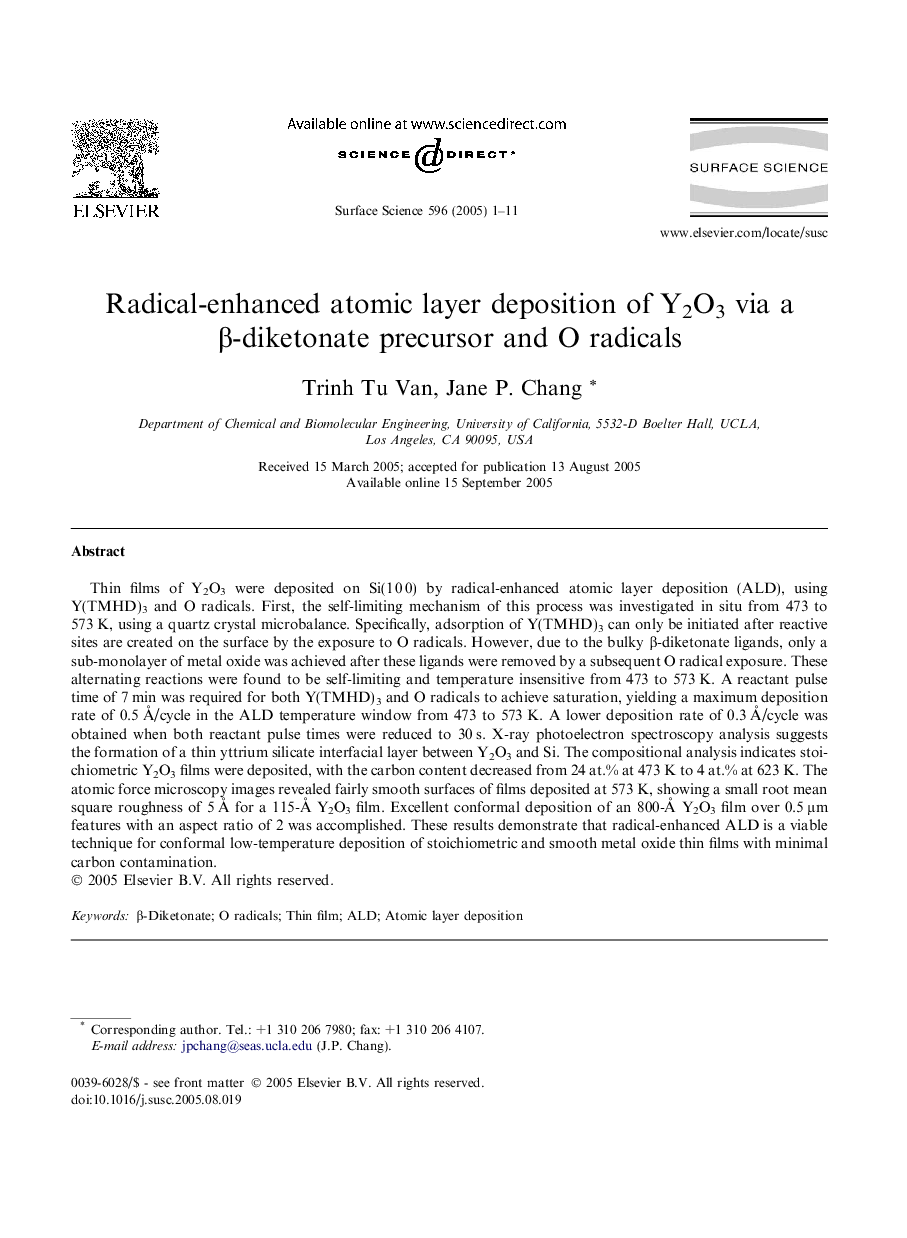| Article ID | Journal | Published Year | Pages | File Type |
|---|---|---|---|---|
| 9594471 | Surface Science | 2005 | 11 Pages |
Abstract
Thin films of Y2O3 were deposited on Si(1 0 0) by radical-enhanced atomic layer deposition (ALD), using Y(TMHD)3 and O radicals. First, the self-limiting mechanism of this process was investigated in situ from 473 to 573 K, using a quartz crystal microbalance. Specifically, adsorption of Y(TMHD)3 can only be initiated after reactive sites are created on the surface by the exposure to O radicals. However, due to the bulky β-diketonate ligands, only a sub-monolayer of metal oxide was achieved after these ligands were removed by a subsequent O radical exposure. These alternating reactions were found to be self-limiting and temperature insensitive from 473 to 573 K. A reactant pulse time of 7 min was required for both Y(TMHD)3 and O radicals to achieve saturation, yielding a maximum deposition rate of 0.5 Ã
/cycle in the ALD temperature window from 473 to 573Â K. A lower deposition rate of 0.3Â Ã
/cycle was obtained when both reactant pulse times were reduced to 30Â s. X-ray photoelectron spectroscopy analysis suggests the formation of a thin yttrium silicate interfacial layer between Y2O3 and Si. The compositional analysis indicates stoichiometric Y2O3 films were deposited, with the carbon content decreased from 24Â at.% at 473Â K to 4Â at.% at 623Â K. The atomic force microscopy images revealed fairly smooth surfaces of films deposited at 573Â K, showing a small root mean square roughness of 5Â Ã
for a 115-Ã
Y2O3 film. Excellent conformal deposition of an 800-Ã
Y2O3 film over 0.5 μm features with an aspect ratio of 2 was accomplished. These results demonstrate that radical-enhanced ALD is a viable technique for conformal low-temperature deposition of stoichiometric and smooth metal oxide thin films with minimal carbon contamination.
Related Topics
Physical Sciences and Engineering
Chemistry
Physical and Theoretical Chemistry
Authors
Trinh Tu Van, Jane P. Chang,
